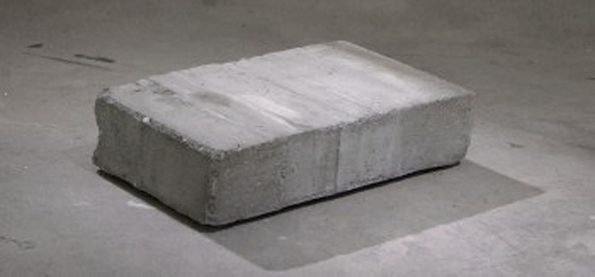Search
To search for an exact match, type the word or phrase you want in quotation marks.
A*DESK has been offering since 2002 contents about criticism and contemporary art. A*DESK has become consolidated thanks to all those who have believed in the project, all those who have followed us, debating, participating and collaborating. Many people have collaborated with A*DESK, and continue to do so. Their efforts, knowledge and belief in the project are what make it grow internationally. At A*DESK we have also generated work for over one hundred professionals in culture, from small collaborations with reviews and classes, to more prolonged and intense collaborations.
At A*DESK we believe in the need for free and universal access to culture and knowledge. We want to carry on being independent, remaining open to more ideas and opinions. If you believe in A*DESK, we need your backing to be able to continue. You can now participate in the project by supporting it. You can choose how much you want to contribute to the project.
You can decide how much you want to bring to the project.

“But the daylight failed, dusk fell and we were plunged, it seems, into the monotonous nights of the Victorian bourgeoisie. Sexuality was carefully locked away. It moved into the home. The conjugal family confiscated it, absorbing it whole and entire into the serious function of reproduction. One did not speak of sex. The legitimate, procreating couple laid down the law, imposed itself as the model, enforced the norm; it alone possessed the truth of sex, reserving itself the right to speak of it or to keep it secret.” [[Michel Foucault, The History of Sexuality: The Will to Knowledge (Madrid: Siglo Veintiuno, 2009)]]
In 1999 the Mexican artist Teresa Margolles produced Entierro, a block of cement with a human foetus inside it. At first glance, the work of Margolles is articulated around the question that it unleashes on the public, about the agency of the dead body within the set of legal definitions that regulate not just its own legality, but also that of the decision of the pregnant woman. The work underlines the type of silent and sustained violence to which the female population is permanently subjected on the part of the state, that of the negation of her right to interrupt a pregnancy that occurs in her own uterus.
By inserting the corpse into a bock of cement, the organic quality of the foetus is offered to that of the material itself, still warm and malleable. Both solidify together, generating an analogy with the placenta, bonding into a new permanent unity. This second death of the foetus alludes to the seclusion of the anonymous abortion – its silence-, while at the same time linking it with funerary rites by returning it to the earth. Moreover it unleashes a series of symbolic exchanges that link the dead body to other universes of marginal significance (the art market, the treatment of people, etc.) If today somebody wants to trace the lives that Entierro has had, I encourage them to do so. Entierro has been probed by centres of institutional power; like the body that shuts down its own circulation it has always been controversial. With Entierro, nonetheless, a particular economy of circulation was generated for the work, which from then onwards determined the way it was shown in the measure that it contorted and renegotiated its meaning, exhibition and status of fetish within the art market.
The reading that I am left with of this great piece by Margolles is how if the bodies of the individuals are where the battles between ideologies are fought, as happens in works of art, the stories of power determine how and when these are shown and hidden. The weapons that they brandish are the words that they use to name things and the legal and ethical frameworks that configure them, so that these, little by little, become significant in one way or another. The index has the power to create customs and naturalise the violence of these regulations. The bodies of women – not just pregnant ones- are in this case the battlefield.
The new legal framework is confounded within an ethical framework and on a grey morning in December they gallop together, between Herrera style palaces, towards 1953. Women who at a point in time decided freely to interrupt our pregnancies have no idea today in what quality this new regime appeal to us. Those who decide to do so from here on in will have to do like Entierro and negotiate with the powers that be the excuses that will count for them to inhabit the established framework in the way that they want.
How sad it all is.

Paloma Checa-Gismero is Assistant Professor at San Diego State University and Candidate to Ph.D. in Art History, Criticism and Theory at the University of California San Diego. A historian of universal and Latin American contemporary art, she studies the encounters between local aesthetics and global standards. Recent academic publications include ‘Realism in the Work of Maria Thereza Alves’, Afterall, autumn/winter 2017, and ‘Global Contemporary Art Tourism: Engaging with Cuban Authenticity Through the Bienal de La Habana’, in Tourism Planning & Development, vol. 15, 3, 2017. Since 2014 Paloma is a member of the editorial collective of FIELD journal.
"A desk is a dangerous place from which to watch the world" (John Le Carré)